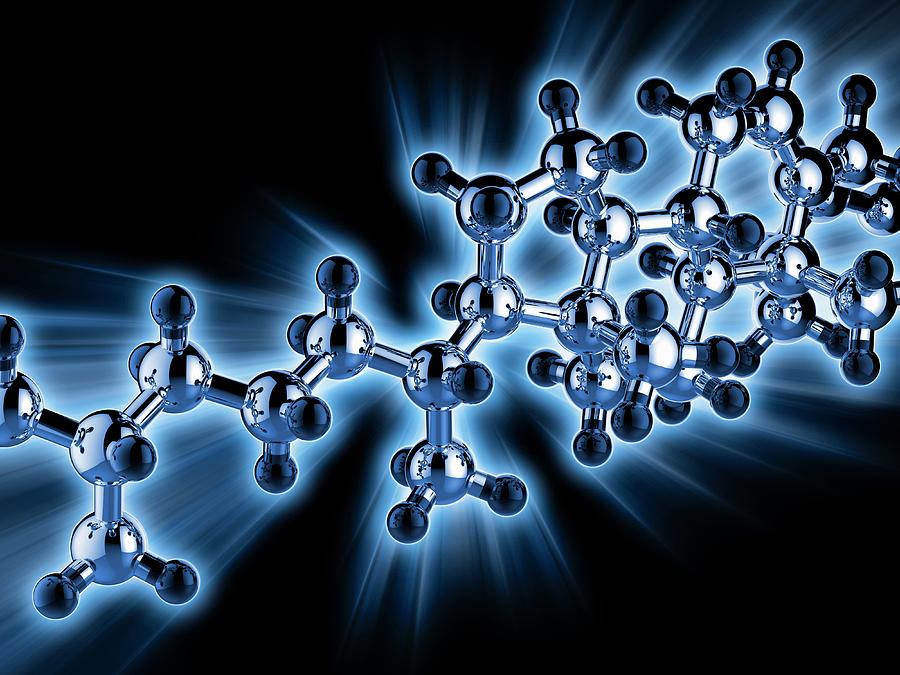Table Of Content

Due to the unstable training of GAN, some variants were proposed like wassertein GAN (WGAN) [52]. WGAN incorporates the Earth-Mover (EM) distance, which reflects the minimum cost under optimal planning to get a smoother gradient. WGAN not only alleviates the problem of unstable training, but also evaluates reliably generative models to avoid mode collapse. Visualization of the latent representations via t-SNE obtained with the trained energy-based model for the molecules in the training set as well as the generated molecules with restrictions on the QED property is shown. 5b, as the number of phases increases, the number of new molecules with S1 values that are relatively lower than those in the previous phase increases. After the first phase, the number of newly generated molecules with S1 values lower than 1.77 eV is 12.
Quantum chemistry
They demonstrated chemical accuracy of 1 kcal mol−1 in the total energy prediction for relatively small molecules in the QM7/QM9 dataset that contains only H, C, N, O, and F atoms. High throughput quantum mechanical calculations, such as density functional theory (DFT), based simulations are the first step towards this goal of providing insight into larger chemical space and have shown some promise in accelerating novel molecule discovery. However, the physics based modeling still requires human intelligence for different decision-making processes, and for instance, it cannot autonomously guide small-molecule therapeutic design steps, thus slowing down the entire process. In addition, the inverse design of molecules is equally difficult with quantum mechanical simulations alone. The amount of data produced by these high throughput methods is so large that it cannot be analyzed in real-time with conventional methods. Autonomous computational design and characterization of molecules is more important in the scenarios where existing experimental/computational approaches are inefficient [14,15].
Targeted molecule generation
You can load an array of crystal cells (2x2x2 or 1x3x3) or a single unit cell when viewing crystal structures. This shows a new layer where you can view molecular spectra of the current structural formula (loaded from the Sketcher) More details are covered in the Spectroscopy chapter. You can also click on the dropdown button next to the search field to select a specific database.
‘Designer molecules’ could create tailor-made quantum devices
First Ever AI Solution to Integrate Drug Discovery and Synthesis - Lab Manager Magazine
First Ever AI Solution to Integrate Drug Discovery and Synthesis.
Posted: Tue, 02 Jan 2024 08:00:00 GMT [source]
The concept of deep learning was formally proposed for solving the vanishing gradient problem by Hinton et al. [8] in 2006. Then in the ImageNet image recognition competition, the team led by Hinton used the AlexNet model [9] that made a sensation for eliminating vanishing gradient via the ‘ReLU’ activation function. In 2016, the triumph of AlphaGo [10] proved that deep learning was promising in surpassing humans. Up to now, deep learning has been applied successfully to computer vision [11, 12], natural language processing [13, 14], and some other fields [15, 16].
Highly accurate protein structure prediction with AlphaFold
The distribution of the proportion of molecular candidates satisfying target requirements obtained with the energy-based models trained with both CD learning and QC-assisted learning are plotted for c QED property targets and d LogP property targets. The same set of reference molecules is used as the initial starting point for optimizing molecules with both models for a fair comparison. Generative networks based on RNNs model the graph generation as a sequential process and make auto-regressive decisions while they generate graphs. GraphNet [81], the first RNNs-based model on arbitrary graph, was on the framework of the message-passing neural networks (MPNN) [82]. The essence of GraphNet was to add a new atom or bond into the existing graph.
MolView consists of two main parts, a structural formula editor and a 3D model viewer. The structural formula editor is surround by three toolbars which contain the tools you can use in the editor. Once you’ve drawn a molecule, you can click the 2D to 3D button to convert the molecule into a 3D model which is then displayed in the viewer.
Optimization strategy for molecular design
Because each method has its advantages and disadvantages, the methods may act synergistically when used together rather than alone. In this respect, our evolutionary design method is also expected to be a promising tool with which to explore the enormous chemical space and facilitate the discovery of novel materials. In addition, we also selected the 100 top-scoring molecules from the ChEMBL25 test dataset as conditional seed to compare with the baselines. The performance of the model was similar to that of the cRNN in that they generated SMILES strings by extracting the ECFP that satisfied the initially constrained properties. Overall, the validation results confirm that the EDM method delivers performance comparable to that of the cRNN and other algorithms by achieving the maximum score for all eight of the given tasks. The effectiveness of the entirely data-driven evolutionary approach was validated by conducting various molecular design tasks on data in the PubChem library to change the wavelengths at which organic molecules absorb the maximum amount of light32.
As a final experiment, to generate a molecular structure with properties in the extrapolation area, we added a process that repeatedly calculates newly generated molecules and re-trains the RNN and DNN models. To create a group of molecules with S1 values smaller than 1.77 eV using data with an S1 distribution above 1.77 eV, we selected the 30 molecules with the smallest S1 values in the training data as seed molecules. Based on the sampled 30 molecular seeds, the process of generating new molecules was repeated 300 times to derive new molecules with S1 lower than 1.77 eV. We calculated the new molecules by DFT and then re-trained the RNN and DNN models, similar to the initial training process.
The distribution of the properties for molecules in the training set satisfying the corresponding targets is also provided for reference. VAE generally contains an encoder and a decoder, which the encoder maps discrete data to a continuous latent space[46]. Further, in order to perform unconstrained optimization for specific properties, the decoder is responsible for reconstructing from the latent vector to SMILES with chemical validity.
Green-by-Design Small-Molecule API Synthesis - Pharmaceutical Technology Magazine
Green-by-Design Small-Molecule API Synthesis.
Posted: Thu, 28 Sep 2023 07:00:00 GMT [source]
The observed concentration of molecules in both training and generated sets is highest in approximately similar ranges of molecular properties. Figure 3a, b shows that the molecules generated exhibit higher density levels when they have either low partition coefficients and high QED values or high partition coefficients and lower QED values. In addition to LogP and QED, we also compute the Kullback–Leibler (KL) divergence values for various molecular properties to measure the difference between the distribution of generated molecules with that of the training set distributions. The KL-divergence scores for the molecules generated with the proposed QC-based framework, along with the CVAE, MGM, and GBGA baselines, are reported in Supplementary Table 5. With the exceptions of the number of hydrogen bond acceptors and internal similarity, the molecules generated with the QC-based molecular design approach exhibit the highest KL-divergence scores as compared to the other baselines.
Corwin Herman Hansch was born Oct. 6, 1918, in Kenmare, N.D. He received his bachelor’s degree in chemistry from the University of Illinois in 1940 and his doctorate from New York University in 1944. Upon graduation he joined the wartime Manhattan Project that was developing the atomic bomb. By the time of his retirement, Hansch had published more than 250 papers in scientific journals, with at least 43 undergraduate co-authors. Each of them had to be trained in how to do the research, but by the time they had learned the procedures they were often ready to leave for graduate school, medical school or some other endeavor. In practice, the first step in using the equations is determining the biological effects of a series of closely related compounds. The equation that results then reveals how the structure of the molecule should be varied to obtain the maximum biological effect.
Although quantum-enhanced machine learning and optimization can be employed for molecular property prediction and inverse design, several research challenges remain. Developing prediction models and design methods that are compatible with near-term quantum devices with noisy qubits is the first challenge. There have been attempts at hybrid quantum-classical optimization techniques for determining the structural configuration of molecules36,37, but these approaches do not scale for larger molecules on today’s quantum computers. As a result, scalable QC approaches for a molecular design that can handle problems across varying scales are another important research challenge. Generative models, such as GANs, RNNs, and VAEs, have been used together with reward-driven and dynamic decision making reinforcement learning (RL) techniques in many cases with unprecedented success in generating molecules.
In recent years, some improvement on the network architectures like long-short term memory (LSTM) [57] and gated recurrent unit (GRU) [58] have been proposed due to the difficult training of RNNs. LSTM, adding the memory cell that replaces conventional units, solves difficulties with training encountered by RNNs. And the simplicity of GRU is more suitable for building larger networks due to the smaller amount of parameters. Currently, CAMD workflows are generally built and trained with a specific goal in mind. Such workflows need to be re-configured and re-trained to work for different objectives in therapeutic design and discovery. It would be particularly very helpful for the domains where a relatively small amount of data exist.
Governed by the proposed optimization procedure, the surrogate model is sequentially refined to explore the chemical space for identifying molecules that satisfy the desired property requirements and structural constraints. Since the sequence representation of SMILES, the analogy of natural language processing tasks and molecular generation is feasible [27]. For RNNs, the features obtained from large molecular datasets can be transferred to produce molecules with activity on demand in small ones, so that Segler et al. [59] generated focused molecule libraries by retraining the model (refer Figure 2.3). Sampling from the large-scale datasets ensured the diversity of molecules and fine-turning increased the focused properties.
The Virtual Model Kit has been a source of inspiration for the birth of this project. A promising drug, for example, might prove to have low toxicity in general, but one disturbing side effect. The Hansch equation suggests how the molecule should be modified to minimize the adverse properties.
More concretely, (1) choosing to add an atom or not, (2) computing the probabilities over the existing graph to determine if adds a new edge, (3) calculating the probabilities which one node in graph to connect. In addition, Li et al. [83] explored MolMP and MolRNN based on graph convolutional networks (GCN) [84] which was similar with the generation of GraphNet, which generated molecules by iteratively adding nodes and edges to the existing subgraphs. Converting the extra constraints into available conditional codes that did not require reinforcement learning provided higher flexibility and outputs the molecules with more diversity. The efficacy and potency of generated molecules against a target protein should be examined by predicting protein–ligand interactions (PLIs) and estimating key biophysical parameters. Figure 6 shows some of the computational methods frequently used in the literature (independently or together) for PLI prediction.

No comments:
Post a Comment